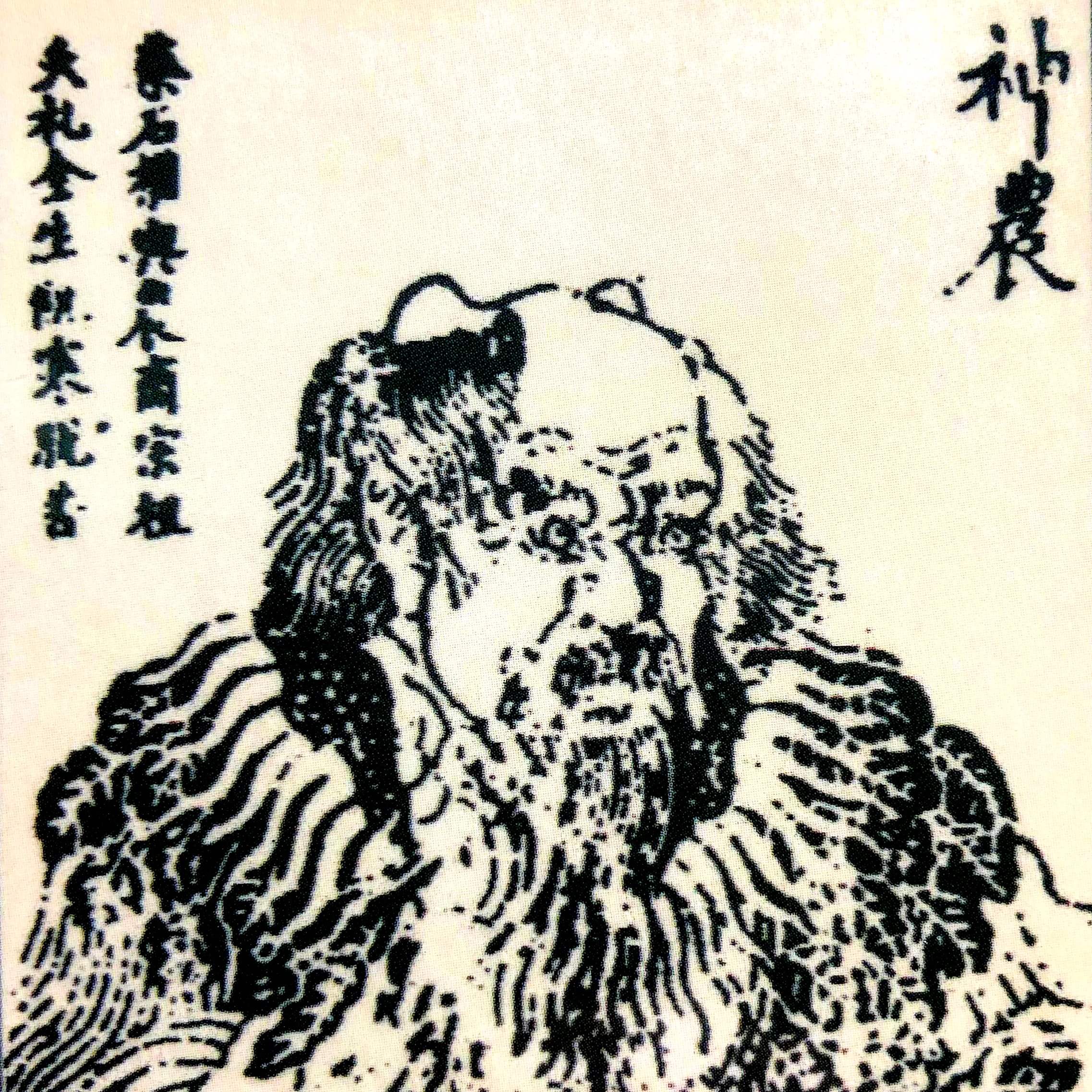History of Cannabis Use for Medicinal Purposes
Medical Cannabis in Ancient Times
Cannabis has a long history of medicinal use dating back thousands of years and across various cultures and civilizations. This overview of the history of cannabis use for medicinal purposes traces its roots from ancient times to the modern era.

Cannabis was present around 12,000 years ago near the Altai Mountains in Central Asia (see Sources below), and since then, cannabis seeds have accompanied the migration of nomadic peoples. The earliest recorded use of cannabis as medicine comes from ancient China. The Chinese Emperor Shen Nong, known as the father of Chinese medicine, is said to have discovered the medicinal properties of cannabis around 2,700 BCE.

In the ancient text Shen Nong Ben Cao Jing (The Divine Farmer's Materia Medica), cannabis was recommended for various ailments and shortcomings, including rheumatism, gout, malaria, and absent-mindedness. The plant was also used both as a pain reliever and to treat a variety of other conditions, such as inflammation, menstrual cramps, and even psychological disorders.
In Egypt, cannabis was mentioned in the Ebers Papyrus, an ancient medical text dating to around 1550 BCE. The Egyptians used cannabis to treat inflammation, glaucoma, and even as a suppository to relieve pain during childbirth. There are references to its use in medicinal concoctions for issues like hemorrhoids and sore eyes, suggesting its value in treating pain and inflammation.
Cannabis has also been used in India for thousands of years both for its psychoactive and medicinal properties. In the Atharva Veda, an ancient Hindu text dating to around 2000–1000 BCE, cannabis is referred to as one of the five sacred plants. It was used as a remedy for anxiety, to boost appetite, and for its analgesic effects. The traditional Indian system of Ayurveda also incorporates cannabis, known as Vijaya in Sanskrit, for a range of conditions, including pain relief, digestive issues, and various neurological disorders.
Cannabis in the Classical and Medieval Periods
The ancient Greeks and Romans also recognized the medicinal properties of cannabis. The Greek physician Pedanius Dioscorides mentioned cannabis in his work De Materia Medica (circa 1st century CE) as a remedy for earaches, inflammation, and as a pain reliever.
The famous Roman historian Pliny the Elder (23–79 CE) also wrote about cannabis in his Natural History, highlighting its uses for pain relief, treating wounds, and even as an anesthetic in surgical procedures.
During the Islamic Golden Age (circa 9th–14th centuries), cannabis was also used medicinally. Islamic physicians such as Avicenna (Ibn Sina) and Al-Razi (Rhazes) documented the medicinal uses of cannabis in their writings. It was used to treat conditions such as epilepsy, nausea, vomiting, inflammation, and as an appetite stimulant. Hashish, a concentrated form of cannabis, also became widely used in the Islamic world for both recreational and medicinal purposes.
Cannabis in Europe and the Americas
In early modern Europe of the 16th to 18th century, cannabis was known and used mainly in the form of hemp, primarily for its fibers in the production of ropes, textiles, and paper. However, medicinal uses also persisted. For example, the 16th-century physician Galen mentioned cannabis as a treatment for earaches. In the 18th century, the English herbalist Nicholas Culpepper recommended cannabis seeds in his Complete Herbal (1653) for treating inflammation, coughs, jaundice, and gout.
In the 19th century, cannabis started to gain recognition in Western medicine. The Irish doctor William Brooke O'Shaughnessy is credited with introducing cannabis to Western medicine after observing its use in India. In 1839, he published a study on the therapeutic effects of cannabis, particularly its anticonvulsant and analgesic properties. This led to the widespread use of cannabis tinctures for various illnesses and symptoms, including pain relief, muscle spasms, and nausea.
Cannabis was included in the United States Pharmacopeia from 1850 to 1942 and was commonly used in medicines to treat a wide range of conditions, including neuralgia, tetanus, typhus, cholera, rabies, and even postpartum psychosis.
The Twentieth Century Prohibition Era
Despite its therapeutic efficacy, the early 20th century saw growing concerns about the psychoactive effects of cannabis, particularly due to its recreational use. The rise of regulatory controls began in the early 1900s, with the Harrison Narcotics Tax Act of 1914 regulating the sale and distribution of all narcotics, including cannabis.

In the 1930s, campaigns against marijuana (a term often conflating hemp and cannabis) gained momentum in the United States, leading to the Marihuana Tax Act of 1937, which effectively banned its use and sale.
The History of the term Marijuana
The term marijuana (a.k.a. marihuana) has its roots in Mexican Spanish, where it was used to refer to the cannabis plant. The exact origin of the term is uncertain, but it is generally believed to have derived from Mexican colloquial language during the early 20th century. It was likely a combination or adaptation of older words, possibly borrowed from indigenous languages.
While the exact etymology of the word is unclear, some theories suggest it could also be derived from the Chinese ma ren hua (麻仁花), meaning hemp seed flower, reflecting the influence of Chinese laborers in Mexico during the 19th century.
Demonization in the United States and its Results
In the early 20th century, cannabis was commonly known in the US as hemp or cannabis. The term "marijuana" came into wide use as the US government introduced anti-cannabis campaigns during the 1930s, partially as a way to stigmatize the plant by associating it with Mexican immigrants. The use of "marijuana" in the media and legislation, including the Marihuana Tax Act of 1937, contributed to its widespread adoption as the standard term for cannabis in the US in order to focus on its psychoactive use.
Today, the word marijuana often specifically refers to cannabis used for its recreational properties, containing higher levels of THC. In contrast, “hemp" usually refers to cannabis strains used for industrial or medical purposes, containing very low levels of THC. In the 1940s and 50s, cannabis was removed from the US Pharmacopeia, and its medicinal use declined sharply. The Controlled Substances Act of 1970 classified cannabis as a Schedule I drug in the United States, defining it as having no accepted medical use and a high potential for abuse.
The consequence of the severe prohibition of cannabis (still classified in the same drug class as heroin) is that not even research into its medicinal properties or industrial use could be conducted. This placed other countries with more open legal frameworks way ahead in discovering the significant beneficial aspects of key compounds in the plant, such as CBD (discovered in Israel in 1963).
Contemporary Revival and Modern Research
The late 20th century saw a resurgence in the interest and research into the medicinal uses of cannabis. This was driven in part by anecdotal reports and early clinical studies suggesting benefits for conditions like glaucoma, cancer-related pain, and AIDS-related wasting syndrome.
In 1996, California became the first US State to legalize medical cannabis. Since then, many states and countries worldwide have followed, legalizing cannabis for medical purposes and expanding research. As of 2024, half of US states and nine countries have fully legalized recreational cannabis use including Canada, South Africa, Mexico, and Germany (legalized in April 2024, though sales have not yet been authorized).
Some countries, like Australia and the US, have partial legalization, where recreational cannabis use is allowed in certain states or territories but remains illegal at the federal level. Furthermore, numerous other countries have decriminalized cannabis or allow its use strictly for medicinal purposes in a regulated manner.
The legality of cannabis varies significantly across the globe, and its regulation often depends on the specific country's policies and cultural attitudes towards the plant’s use.
Modern research has focused on the active cannabis compounds CBD and THC, which have shown potential in treating a variety of conditions, including chronic pain, epilepsy, multiple sclerosis, and anxiety.
With the explosion of research in recent yers, there are now more than 36,000 scientific papers on cannabis, which has been recognized for its potential therapeutic benefits for treating chronic pain (especially neuropathic pain), epilepsy (notably Dravet syndrome and Lennox-Gastaut syndrome), multiple sclerosis, cancer-related symptoms (nausea, vomiting, pain), anxiety and PTSD, and neurodegenerative diseases (such as Alzheimer's and Parkinson’s).
Cannabis has been used for medicinal purposes for thousands of years, with evidence of its use spanning multiple cultures and eras. Despite a period of prohibition and decline in medicinal use, the modern era has seen a significant resurgence in the acceptance and research of cannabis for its therapeutic potential. This shift reflects a broader understanding of its benefits, driven by a combination of historical knowledge, patient and consumer advocacy, and scientific inquiry.
Resources
The following sources provide a comprehensive look into the multifaceted history of cannabis, from its ancient roots to its modern-day use and regulation.
Books
Cannabis: Evolution and Ethnobotany by Robert C. Clarke and Mark D. Merlin: This book provides an in-depth exploration of the botanical, cultural, and historical aspects of cannabis use throughout human history.
The Emperor Wears No Clothes by Jack Herer: A classic book on the history of cannabis, covering its use in various civilizations for medicinal, spiritual, and industrial purposes.
Smoke Signals: A Social History of Marijuana – Medical, Recreational, and Scientific by Martin A. Lee: This book traces the history of cannabis from ancient times to the modern era, focusing on its cultural and political journey, especially in the United States.
Marijuana: The First Twelve Thousand Years by Ernest L. Abel: An academic look at the historical use of marijuana, from ancient China and India to the modern-day.
Reefer Madness: Sex, Drugs, and Cheap Labor in the American Black Market: An excursion into the US anti-cannabis campaigns by Eric Schlosser.
Academic Journals and Articles
Journal of Cannabis Research is a peer-reviewed journal that often publishes articles exploring the cultural, historical, and scientific aspects of cannabis.
The Origins of Cannabis Smoking: Cannabis Use in the Ancient World published in the journal Science Advances (Ren et al., 2019): This research paper provides evidence of ancient cannabis use in China for psychoactive purposes.
History of Cannabis and Its Preparations in Saga, Science, and Sobriquet by Dr. Ethan Russo offers a comprehensive review available in *Chemistry & Biodiversity* that explores the historical use of cannabis and its preparations across different cultures.
Online Resources
The National Organization for the Reform of Marijuana Laws (NORML) provides historical context and articles related to the history of cannabis use in society and law.
The Marijuana Museum offers a detailed timeline and history of cannabis use from ancient civilizations to modern times.
The Drug Policy Alliance contains historical information and timelines on cannabis prohibition, legalization efforts, and the plant's historical uses.
Ancient Texts and Historical References
Evidence of cannabis 12,000 years ago in the Altai region.
Ebers Papyrus (Egypt, circa 1,550 BCE) is one of the oldest known medical texts that references cannabis as a medicinal substance.
Shen Nong Ben Cao Jing (China, circa 2,700 BCE) is an ancient Chinese text attributing the discovery of medicinal plants, including cannabis, to Emperor Shen Nong.
The Atharva Veda (India, circa 2,000–1,000 BCE) is considered one of the oldest sacred texts in Hinduism, where cannabis (referred to as "bhang") is mentioned for its medicinal properties.